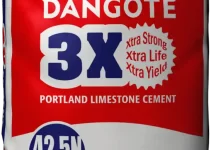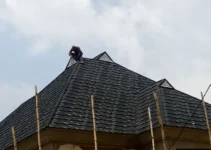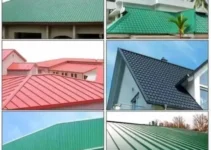Paint is an essential item for construction projects and home renovations in Nigeria. The demand for quality paints has risen over the years due to growth in the construction sector.
This article provides a comprehensive overview of the prices of different paint brands in Nigeria along with the key factors affecting paint prices.
Overview of Paint Brands in Nigeria
Some of the most popular paint brands in Nigeria include:
- Dulux – Known for high quality and durability. Offers emulsions, glosses and textured finishes.
- Berger – Another leading brand offering a wide range of paints including emulsions, glosses, and finishes.
- Value Paints – New entrant gaining foothold due to competitive pricing.
- Presidential – A premium brand with high-end paint products.
- Meyer – A relatively new brand gaining popularity for affordable prices and quality.
- Finecoat – Known for budget-friendly paints with good coverage and durability.
- Eagle – Caters to low and mid-range segments with variety of paints.
- Saclux – Local brand offering different paint shades at varying price points.
Some other notable paint brands in the Nigerian market include Roval, Sunflag, Nippon, Colour Viscosity,swicktec and Deco. They offer decorative and industrial paints at economical price points to cater to different consumer segments.
With growing construction activity in Nigeria, many global paint giants are also looking to enter the market. Brands like Asian Paints, Kansai Nerolac and AkzoNobel have plans to establish operations in Nigeria and introduce their international quality products. This is likely to intensify competition and provide more options to consumers.
Historical Overview of Paint Prices
Historically, paint prices in Nigeria were relatively stable with occasional fluctuations over the past few decades. However, prices have witnessed significant volatility in recent years due to factors like:
- Raw material costs – Prices increased by 15% in 2019 due to hike in titanium dioxide prices.
- Currency fluctuations – The Naira devaluation makes imports of raw materials more expensive.
- Inflation – Rising inflation has pushed up production costs and retail prices.
- COVID-19 – Disruptions in supply chains and demand caused price swings.
Paint manufacturers have tried to absorb some of the increased costs but have also passed on some price rises to consumers to maintain profitability. Managing pricing volatility remains a key challenge.
For instance, a 20 litre bucket of popular Berger Bison Acrylic PVA white paint was priced at around ₦8,000-₦10,000 prior to 2015. The pricing remained stable over many years.
However, with rising raw material costs and currency devaluation, the same pack size and quality of Berger paint now costs between ₦12,000-₦15,000 indicating a price growth of over 30% in 5 years.
Similar price rises are seen in competing economy segment paint brands like Finecoat, Deco and Roval.
The premium end Dulux brand has also witnessed paint price hikes from around ₦15,000 five years back for a 4 litre pack to ₦18,000-₦22,000 for the same pack indicating the impact of inflation and input material costs.
Current Prices of Paints in Nigeria
The prices of paints vary across different brands and product categories. Here is an overview of paint prices for some popular shades and pack sizes:
- Stucco Paint Prices in Nigeria (July 2024)
- Price of President Paint in Nigeria (July 2024)
- Dulux Paint Price in Nigeria Today (July 2024)
- Berger Paints Price in Nigeria Today (July 2024)
- Value Paint Price in Nigeria (July 2024)
As evident, pricing varies based on brand image and product qualities like finish, durability etc. Premium brands command higher pricing.
Factors Affecting Paint Prices in Nigeria
Some of the key factors that influence the retail prices of paints in Nigeria include:
- Brand Name – Premium brands like Dulux and Berger are priced higher than economy brands.
- Product Quality – High quality paints made from superior ingredients cost more.
- Raw Materials – Prices depend on costs of inputs like titanium dioxide, resin, pigments.
- Production Costs – Overheads like energy, labor and packaging affect pricing.
- Transport Costs – Logistics expenses to transport across regions impact end prices.
- Taxes – Import duties, excise taxes and VAT on finished products influence prices.
- Marketing – Brand popularity and marketing expenses add a premium to prices.
- Segment – Industrial paints are priced higher than decorative paints for home use.
- Region – Paint prices vary across different Nigerian regions.
- Channel – Prices are usually lower in wholesale distribution than retail.
- Currency Exchange Rates – Naira fluctuation against USD impacts imported raw material costs.
- Inflation – Rising inflation pushes up overall manufacturing and retailing costs.
The landed cost of imported raw materials like titanium dioxide, which is a key ingredient in paint formulation, is a major factor in determining paint prices. Over 70% of raw materials are imported by Nigerian paint makers.
Therefore, the exchange rate of the Naira against the Dollar and other foreign currencies directly impacts the raw material costs for manufacturers. A weaker Naira makes inputs pricier.
Rising global crude oil prices also influence resin costs which further push up overall paint production expenses. This cost impact is ultimately passed on to consumers.
Regional Variations in Paint Prices
The prices of paints in Nigeria differ across geographic regions mainly due to:
Lagos – High demand and affluent consumers make prices higher. Dulux Emulsion costs ₦18,000 to ₦20,000 for 20 litres.
Abuja – Being an urban center, paint prices are higher in the capital region. Meyer Emulsion costs ₦13,000 to ₦20,500 for 20 litres.
Port Harcourt – High logistics costs coupled with demand lead to higher paint prices. Dulux Emulsion costs ₦18,000 to ₦20,000 for 20 litres.
North Central – This region has average paint prices that are mid-range. Berger Emulsion costs ₦12,000 to ₦18,000 for 20 litres.
South West – Proximity to Lagos and trade centers make paint prices lower. Finecoat Emulsion costs ₦10,000 to ₦15,000 for 20 litres.
South East – Farther from ports leads to higher transportation costs and prices. Eagle Emulsion costs ₦14,000 to ₦18,000 for 20 litres.
The regional price variation is in the range of 10-20%. Transportation costs to service farther areas adds to pricing. Also consumer demographics, purchasing power, raw material access and competitive intensity impact regional prices.
Cities like Abuja, Lagos and Port Harcourt with higher demand and concentration of premium consumers have relatively elevated paint prices.
Factors Influencing Future Paint Prices
Some of the key factors that may influence the future prices of paints in Nigeria include:
- Rising costs of raw materials like crude oil and titanium dioxide globally
- Currency exchange rate fluctuations impacting input costs
- High inflation leading to higher overall costs
- Increase in labor wages and transportation costs
- New taxes, duties or regulatory changes
- Growth in construction activity expanding paint demand
- New production capacities improving economies of scale
- Competition from foreign paint brands
- Distribution expansion improving supply chains
- Marketing wars between established brands
- Innovation and new product development
- Adoption of newer paint technologies like water-based paints
The interplay between these factors will determine how paint manufacturers price their offerings in the coming years. Companies have to balance cost pressures with demand expansion. Production efficiencies and distribution networks also impact pricing power.
However, analysts expect paint prices in Nigeria to increase at an average of 10-15% annually over the next 5 years. This price growth will be driven by:
- Rising raw material costs due to supply constraints.
- Naira depreciation making imports costlier.
- High energy and freight costs being passed on.
- Expanding dealer network reach adding costs.
- Increasing marketing spend by major brands.
- New product introductions at premium pricing.
- Gradual technology upgrades adding overheads.
Managing pricing will be crucial as the market gets more competitive with entry of new players. Companies have to focus on operational efficiencies and indigenization of raw materials to absorb costs. Distribution scale and brand equity will be pricing power enablers.
Conclusion
The paint category in Nigeria caters to budget sensitive consumers as well as premium segments. Popular paint brands include Dulux, Berger, Finecoat, Meyer and Eagle that offer a range of products at different price points.
Paint prices vary depending on brand, product qualities, raw material costs, region, taxes, marketing and distribution expenses.
With growth in construction activity, increasing costs and competition, paint prices are expected to rise moderately at 10-15% annually over the next few years.
However, players have to grapple with managing pricing volatility amid exchange rate risks and inflationary pressures. Careful cost optimization and strategic pricing will be needed as the paints market becomes more dynamic.





